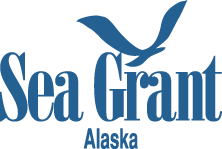Master Materials List
|
Student Handouts |
Items for Group Display |
Material Items |
Facility/Equipment Requirements |
|
Investigation 1: Where Did the Rubber Bath Toys Go? |
|||
|
Science notebooks
Science from Bath Toys
|
none |
Atlas, Internet, or larger scale maps for finding place names Colored pencils or pens to mark the map, or small “stickies” (dots or stars) |
none |
|
Investigation 2: Weather and Circulation Patterns |
|||
|
Science notebooks
Map (for shipping routes)
|
Images: buoy, Weather systems, Average winds, Average pressure systems, North Pacific Subtropical Gyre, Global wind-driven surface currents |
Student maps from Investigation 1 Plastic tub Water Straws Ping-pong ball or other light, floating object Partially full water bottle or full can of soda Scissors Glue |
Internet access for student pairs or groups is desirable but not mandatory |
|
Investigation 3: Waves and Tides |
|||
|
Science notebooks
Marigram Information and Example (3C) (or make overhead transparencies)
Blank Graph (or substitute graph paper) (3C)
Student worksheet (3C)
Tides and Moon (3C) Tide Diagrams (3C)
Four New Marigrams (3C)
|
Wave Diagram (3A) World map or globe |
Lab materials, per group: Glass jar (1 pint to 1 quart size) with tight-fitting lid Mineral oil Rubbing alcohol Water Blue food coloring Glue Plastic tub, 5 gal aquarium, baking dish Corks Thumbtacks Fishing line Metal washers Ruler Ground pepper Tide books or tide data from Internet |
Computer connected to Internet, with projector. |
|
Investigation 4: Temperature and Salinity |
|||
|
Science notebooks
Salinity and Temperature station instructions
Temperature Current lab instructions Maps from Investigation 1 |
Fruit juice cocktail |
4A: |
Computer with Internet access and projector. |
|
Investigation 5: Seafloor Topography |
|||
|
Science notebooks
|
Video Clip Map of ocean floor topography (can be Internet projection) |
Ample amounts of modeling clay or other “barrier” like material (might be able to use cleaned rocks and build the clay around the rocks. In this case the rocks work as volume fillers, and therefore less clay would be used in the barrier construction; also, they wouldn’t float while immersed in water) A dishpan or a 25 quart/24 liter low-profile plastic storage container One-liter plastic bottles with a straw component to gently squeeze the water underneath the surface water just above the bottom of the seafloor model Water Salt Measuring tools Water soluble food coloring Pencil and erasers 11 x 8.5 or 11 x 17 inch white paper |
Computer connected to the Internet and a projector. |
|
Investigation 6: Debris Detectives Field Trip |
|||
|
Science notebooks |
|
Rubber gloves Trash bags Cameras Pencils Clipboards (optional) |
Appropriate location for activity Chalkboard, overhead projector or LCD projector to record/show student data |
|
Investigation 7: Global Conveyor Belt |
|||
|
Science notebooks |
Global conveyor belt animation Ocean Currents (video)
|
Resources for student projects Books and other materials Poster supplies |
Classroom computer with Internet access and projector Student access to Internet for research |




